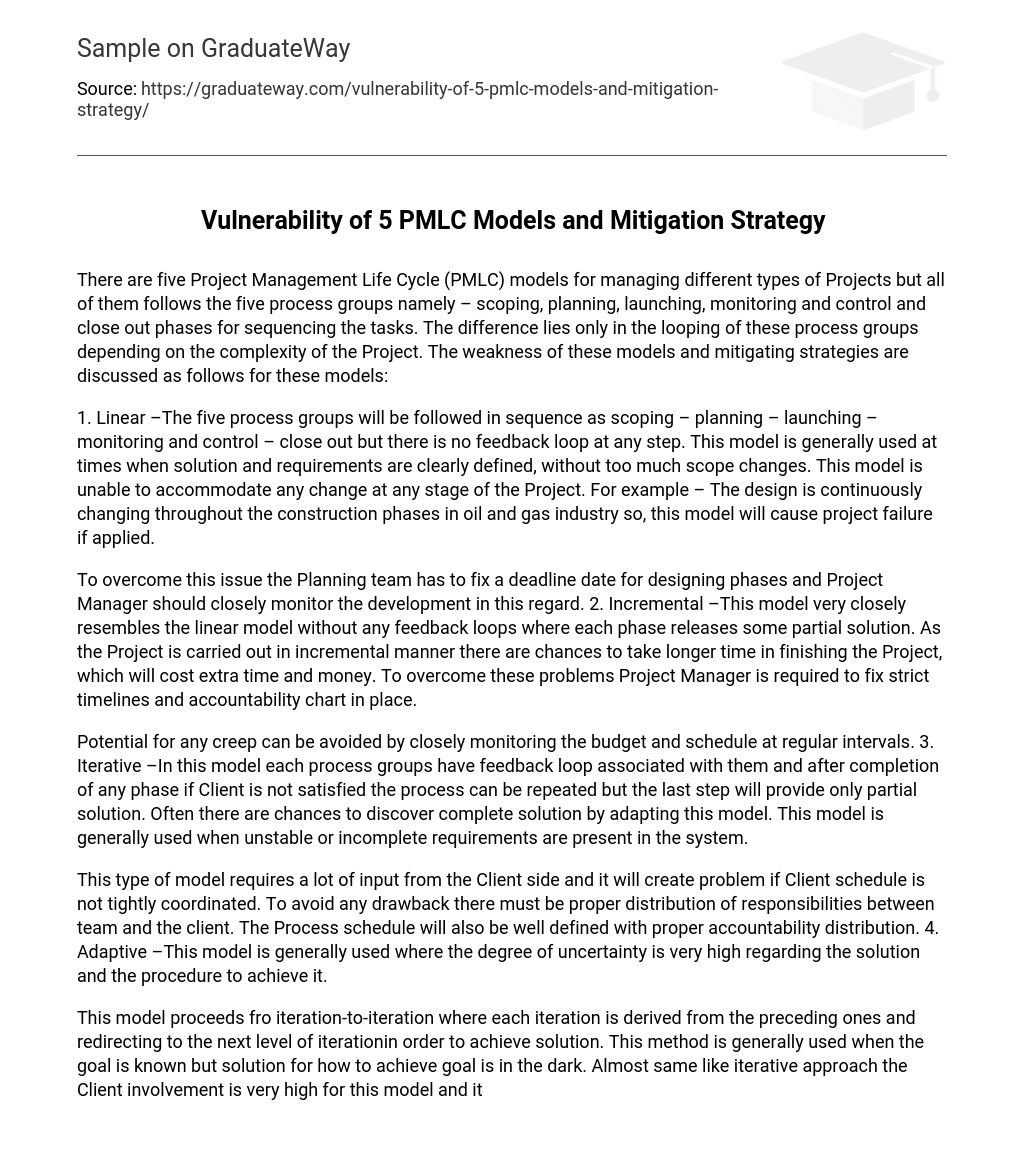There are five Project Management Life Cycle (PMLC) models for managing different types of Projects but all of them follows the five process groups namely – scoping, planning, launching, monitoring and control and close out phases for sequencing the tasks. The difference lies only in the looping of these process groups depending on the complexity of the Project. The weakness of these models and mitigating strategies are discussed as follows for these models:
1. Linear –The five process groups will be followed in sequence as scoping – planning – launching – monitoring and control – close out but there is no feedback loop at any step. This model is generally used at times when solution and requirements are clearly defined, without too much scope changes. This model is unable to accommodate any change at any stage of the Project. For example – The design is continuously changing throughout the construction phases in oil and gas industry so, this model will cause project failure if applied.
To overcome this issue the Planning team has to fix a deadline date for designing phases and Project Manager should closely monitor the development in this regard. 2. Incremental –This model very closely resembles the linear model without any feedback loops where each phase releases some partial solution. As the Project is carried out in incremental manner there are chances to take longer time in finishing the Project, which will cost extra time and money. To overcome these problems Project Manager is required to fix strict timelines and accountability chart in place.
Potential for any creep can be avoided by closely monitoring the budget and schedule at regular intervals. 3. Iterative –In this model each process groups have feedback loop associated with them and after completion of any phase if Client is not satisfied the process can be repeated but the last step will provide only partial solution. Often there are chances to discover complete solution by adapting this model. This model is generally used when unstable or incomplete requirements are present in the system.
This type of model requires a lot of input from the Client side and it will create problem if Client schedule is not tightly coordinated. To avoid any drawback there must be proper distribution of responsibilities between team and the client. The Process schedule will also be well defined with proper accountability distribution. 4. Adaptive –This model is generally used where the degree of uncertainty is very high regarding the solution and the procedure to achieve it.
This model proceeds fro iteration-to-iteration where each iteration is derived from the preceding ones and redirecting to the next level of iterationin order to achieve solution. This method is generally used when the goal is known but solution for how to achieve goal is in the dark. Almost same like iterative approach the Client involvement is very high for this model and it increases its complexity. To overcome the issue same like iterative model an accountability system is needed to be established for pushing Clients in getting timely decisions. . Extreme –In this model one gradually progresses from one process group to another with very limited knowledge of goal and solutions. Each phase learns from its precedence phases and progresses towards successive phases. At the end of any phase if required partial solution can be derived. This model is generally used when goal and solutions are not known. The probability of getting into wrong direction is very high. To avoid this client must be always aware of the upfront so that he can instruct accordingly before its too late.





